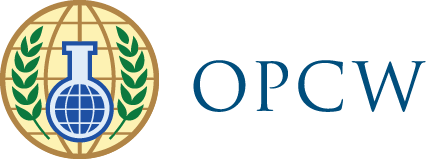
OPCW Delegation visit to Pueblo CWDF
From 28 February to 4 March 2011 a delegation from the OPCW Executive Council visited the Pueblo Chemical Agent Destruction Pilot Plant in Colorado and the Tooele Chemical Agent Disposal Facility in Utah, and held high level meetings in Washington DC.
The delegation comprised the Chairperson of the Council, Ambassador Jean François Blarel, OPCW Director-General Ahmet Üzümcü, a representative from each of the OPCW regional groups, and a representative from the Russian Federation. In addition, at the invitation of the Government of the United States of America, representatives from five other Member States joined the delegation. The European Union provided partial funding support for the visit.
The visit took place in pursuance of a decision taken by the Conference of the States Parties at its Eleventh Session in December 2006 on visits by representatives of the Executive Council to chemical weapons destruction facilities (CWDF) and CWDF construction sites, with the aim to further “consider progress and efforts towards achieving complete destruction in accordance with the provisions of the Convention, and any measures being taken to overcome possible problems in a destruction programme in accordance with Part IV (A), paragraph 26 of the Verification Annex.”
Four similar visits have previously been conducted by the Council. These include two in the USA – at the CWDFs located in Anniston, Alabama in October 2007, and at Pueblo, Colorado and Umatilla, Oregon in May-June 2009 – and two visits in the Russian Federation, at Shchuchye in the Kurgansk region in September 2008 and at Pochep, Bryanskaya Oblast in September 2010.
During this visit, high-level officials from the United States provided comprehensive briefings on the overall progress with regard to the destruction of the United States’ chemical weapons stockpile, the Assembled Chemical Weapons Alternatives (ACWA) programme, the Pueblo Chemical Agent Destruction Pilot Plant, and the ongoing efforts with a view to the destruction of chemical weapons at the Tooele Chemical Agent Disposal Facility.
The visit at Pueblo included tours of the future destruction facility and of two chemical weapons storage igloos. The delegation noted the significant progress achieved in the construction of the new facility since the last visit to Pueblo by representatives of the Executive Council two years ago. Pueblo will destroy 2,371 metric tonnes of mustard agent stored in different types of projectiles and mortars by neutralisation, followed by bio-treatment of the resulting hydrolysate. The construction of the future facility is now 80% complete.
While at Tooele, the OPCW delegation received details with regard to current operations, challenges identified in preparation for the mustard campaign, and the solutions implemented to overcome such challenges and accelerate the programme. The Council representatives toured the Tooele facility, including visits to the small-scale liquid incinerator that will be used for the destruction of remaining small amounts of nerve agent and lewisite, and to the future location of a detonation chamber designated for the destruction of problematic chemical munitions, both scheduled to become operational in 2011. Furthermore, the OPCW delegation met with the inspection team deployed at Tooele to verify that the destruction of chemical weapons is carried out in accordance with the provisions and requirements of the Chemical Weapons Convention.
The Tooele CWDF will destroy 12,121 metric tonnes of chemical-warfare agents, representing more than 43% of the entire stockpile of chemical weapons declared by the United States. To date, the facility has completed the destruction of 11,787 metric tonnes of Sarin, VX, and mustard agents, representing 97.25% of the original stockpile at this site, and is on track to complete destruction early next year.
As part of the visit, the OPCW delegation met with representatives of the Citizens’ Advisory Commissions in the states of Colorado and Utah and was received by Mr Greg Bell, the Lieutenant Governor of Utah.
On the last day of the visit to the United States, the Executive Council representatives held discussions in Washington, DC with Senator Richard Lugar; with Ms Ellen Tauscher, Under Secretary of State for Arms Control and International Security; and with Dr George W. Look, Senior Director for Arms Control and Nonproliferation, National Security Staff.
In December 2006, the United States was granted an extension to complete the destruction of its Category 1 chemical weapons by 29 April 2012. To date, the United States has destroyed a total of 23,406 metric tonnes, or more than 84.29% of its declared stockpile.
